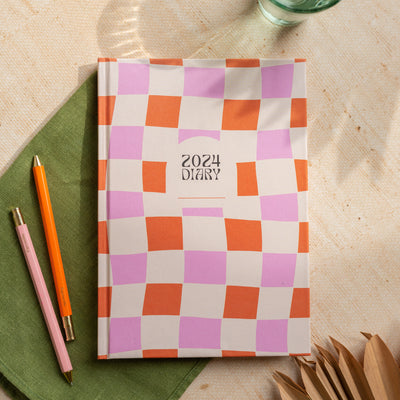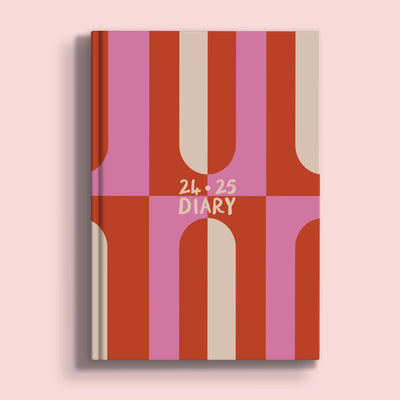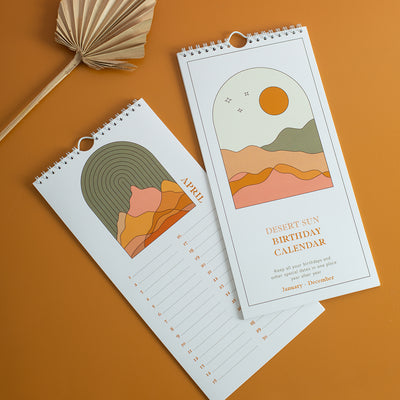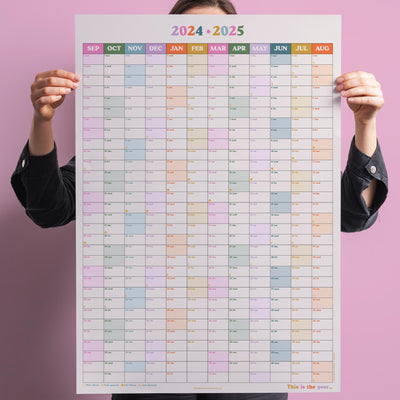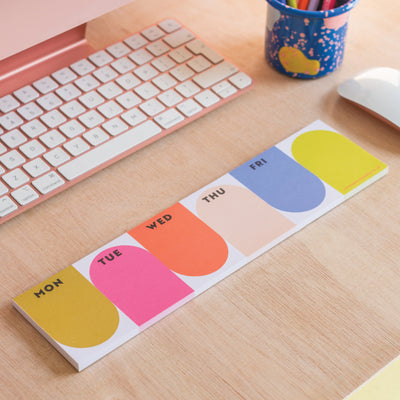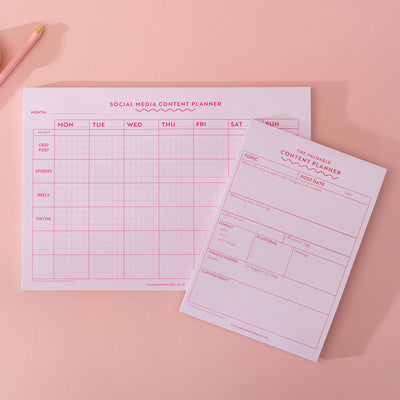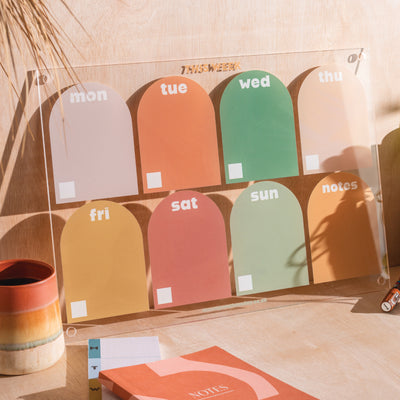Why we don’t use Stone Paper

Every decision we make in the company is looked at through various lenses, and for us, one of those important lenses is the Sustainability lens.
We always question - what are we putting out into the world?
We consider the product lifecycle, from start to end of life. We look at the carbon footprint on how something is made, transported, used, and reused or it’s end of life. The goal is for a circular product. Circular means it continues a life after its use.

Paper is one of our most used materials, so we constantly look for better options.
So far, for any of our printing, we have chosen 100% post-consumer Recycled Papers only. The paper is EU Ecolabel certified, uses a bleach-free process and is milled in Austria.
It was time to look into the pros and cons of Stone Paper.
Is Stone Paper better for the environment?
Stone Paper, hailed as an ‘eco alternative’ to paper from trees, is fast growing in popularity.
So we took a deep dive to find out if its a paper that is a more sustainable option than our current one.
Now, as we know, not everything can be taken at face value, and often so called ‘green’ options need exploring. Despite widely published claims, Stone Paper isn't quite what it seems.
What is Stone Paper Made of?
Stone Paper is claimed to be better for the environment because it doesn't involve cutting down trees, using tons of water, or all the chemicals and petroleum typically used in paper-making.
It’s not actually made from ‘Stone’, but from minerals - in particular calcium carbonate, one of the most common substances on the planet, and in mineral paper production it's claimed to be sourced from leftovers from nearby construction industries — like limestone and marble, mainly produced in Taiwan .
You can find calcium carbonate in things like seashells, pearls, and eggshells, and it's a natural byproduct of limestone found in quarries.
Calcium carbonate is already often used in the production of tradition paper - usually to make it smoother for writing on. Stone paper replaces the wood content entirely.
BUT (and its a big BUT) here's the twist: Stone Paper isn't purely "stone." It's usually make up of about 80% calcium carbonate, and around 20% high-density polyethylene (HDPE) i.e. plastic.
Does Stone Paper contain plastic?
The composition of stone paper varies depending on the manufacturer, but it is typically around 80% calcium carbonate and 20% HDPE, although this can be up to 40%. Some manufacturers also add other additives, such as talc powder, to improve the properties of the paper.
HDPE is a petroleum-based plastic. It’s used for many everyday products like plastic bottles and jugs, Milk cartons, Shampoo bottles, Ziploc bags and Toys.
It is not a renewable resource. HDPE is not biodegradable, and it can take hundreds of years to decompose in a landfill. It is, however, recyclable multiple times, but only if done correctly.
Is Stone Paper Recyclable?
Yes, it is, but NOT as paper, as plastic - but not in all curbside recycling programs. It is typically classified as a Type 2 plastic, which is accepted by some recycling centers but not others. It is important to check with your local recycling center to see if they accept stone paper.
The danger is, that it is mistaken for regular paper and added to paper recycling. If stone paper is added to paper recycling, it can contaminate the recycling stream and make it difficult to recycle the other paper products.
The stone paper can easily break down into small pieces during the recycling process which can get mixed in with the other paper fibers and make it difficult to separate them.
This can lead to the rejection of the entire batch of recycled paper, or the production of lower quality recycled paper products.
For these reasons, it is important to keep stone paper out of the paper recycling stream. And this is the key reason for us not to adopt Stone Paper in our stationery products.
Stone Paper products can only currently be recycled in a closed loop system, i.e. at the production facility where it is made (mainly in Taiwan and Japan).
Is Stone Paper Compostable?
Stone material is said to photodegrade with 14-18 months of sunlight exposure. In the rare occasion that waste would endure such significant sunlight exposure - what happens to HDPE plastic after that process occurs?
And like any other plastics, stone paper won't degrade at all if buried without light exposure.
What about the ‘eco’ claims about Stone Paper?
There are many Stone Paper companies that have taken an aggressive, anti-paper position in order to promote their brand. However, there often seems to be some greenwashing going on around this topic. This article breaks down the validity of each commom claim.
Does Once Upon a Tuesday use Stone Paper?
Now we have clear understanding of Stone Paper, and how it’s made, we know that Stone Paper as well as virgin tradional paper both have a significant impact on the environment.
Stone paper is durable and water-resistant, which can be used for a variety of applications. And even though its lovely and smooth to write on, plus its possibly made from an industry byproduct - its contains at least 20% plastic and can damage entire batches of paper reycling if accidentally added to paper recycling - which is a likely scenario.
We feel its not the right choice for stationery due to its environmental limitations, at this time.
We believe that 100% recycled paper is a more sustainable option than both virgin paper or stone paper.
It helps to reduce the demand for trees and conserve natural resources. It also helps to reduce the amount of waste that goes to landfills (see report here).
Conclusion
For now, we will continue to use 100% recycled paper, and we will always continue exploring other options available on the market.
Most importantly, it’s up to all of us to minimise what we use, to extend any products life spam by reusing where we can, to recycle and to avoid waste where possible.
None of us are perfect - and we always have room for improvement, but we promise to keep trying!
Resources:
https://www.wired.com/2013/02/stone-paper-notebook/
https://www.popularmechanics.com/science/environment/a29995514/stone-paper-environmental-impact/
https://en.wikipedia.org/wiki/Stone_paper
https://www.twosides.info/documents/factsheets/3-Paper-Recovery-and-Recycling.pdf


